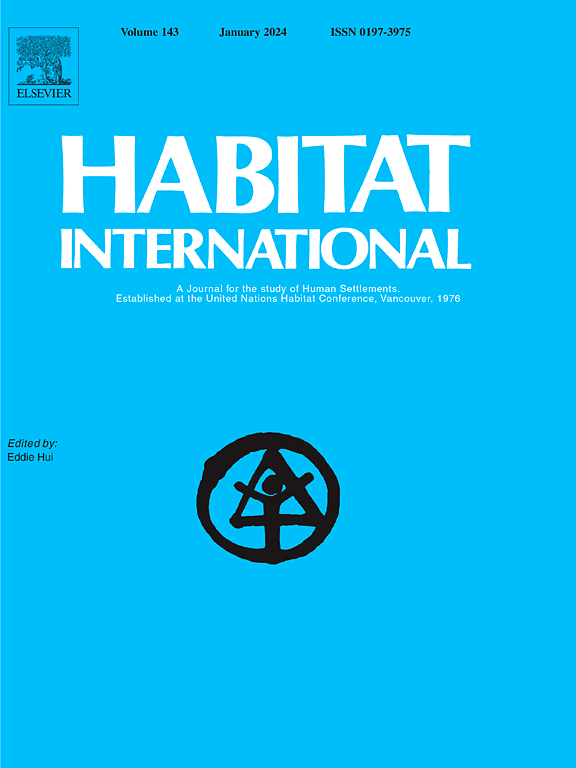Self-containment in Old New Town: Evidence from Senboku New Town using GPS tracking data
IF 6.5
1区 经济学
Q1 DEVELOPMENT STUDIES
引用次数: 0
Abstract
New Towns (NTs) are essential habitats in metropolitan areas with many residents. However, in Asian countries, NTs have a design gap between theory and practice from the viewpoint of self-containment. This study aims to clarify the home range and visiting areas of residents who live in old-NT across generations using GPS tracking data. The areas were classified as Senboku-NT, Senboku-GB, the urban centers, and the other areas. The visiting areas were analyzed by four facility types across generations (young individuals, adults, and older adults). As a case study, this study selected Senboku-NT, which has approximately 48,000 older adults aged 60 years and above, accounting for 43.0 % of the total population. The results showed that a significantly higher number of older adults live within Senboku-NT. As a result, according to urban facility types, a significantly higher number of older adults visited healthcare and leisure facilities in Senboku-NT. This finding is important because it indicates that healthcare and leisure facilities for older adults may have begun to achieve self-containment according to the change from NTs to old NTs. Therefore, we need to redesign the living environment to accommodate the changing lifestyles of the growing number of older adults in old NTs.
旧新城区的自我封闭:利用GPS跟踪数据从Senboku新城区获得的证据
在人口众多的大都市地区,新市镇是必不可少的栖息地。然而,在亚洲国家,从自我遏制的角度来看,新技术在理论和实践之间存在设计差距。本研究旨在利用GPS追踪资料,厘清老北区世代居民的家距及到访区域。这些地区被划分为仙福区-北区、仙福区-国道、城市中心和其他地区。通过四种不同代际的设施类型(年轻人、成年人和老年人)对访问区域进行分析。作为个案研究,本研究选择仙福县为研究对象,该地区约有48,000名60岁及以上的老年人,占总人口的43.0%。结果显示,居住在仙福区内的老年人数量显著增加。因此,根据城市设施类型,前往仙福县北部医疗保健和休闲设施的老年人人数要高得多。这一发现很重要,因为它表明,老年人的医疗保健和休闲设施可能已经开始实现自我控制,根据从nt到旧nt的变化。因此,我们需要重新设计居住环境,以适应旧新界中越来越多的老年人不断变化的生活方式。
本文章由计算机程序翻译,如有差异,请以英文原文为准。
求助全文
约1分钟内获得全文
求助全文
来源期刊

Habitat International
Multiple-
CiteScore
10.50
自引率
10.30%
发文量
151
审稿时长
38 days
期刊介绍:
Habitat International is dedicated to the study of urban and rural human settlements: their planning, design, production and management. Its main focus is on urbanisation in its broadest sense in the developing world. However, increasingly the interrelationships and linkages between cities and towns in the developing and developed worlds are becoming apparent and solutions to the problems that result are urgently required. The economic, social, technological and political systems of the world are intertwined and changes in one region almost always affect other regions.
 求助内容:
求助内容: 应助结果提醒方式:
应助结果提醒方式:


